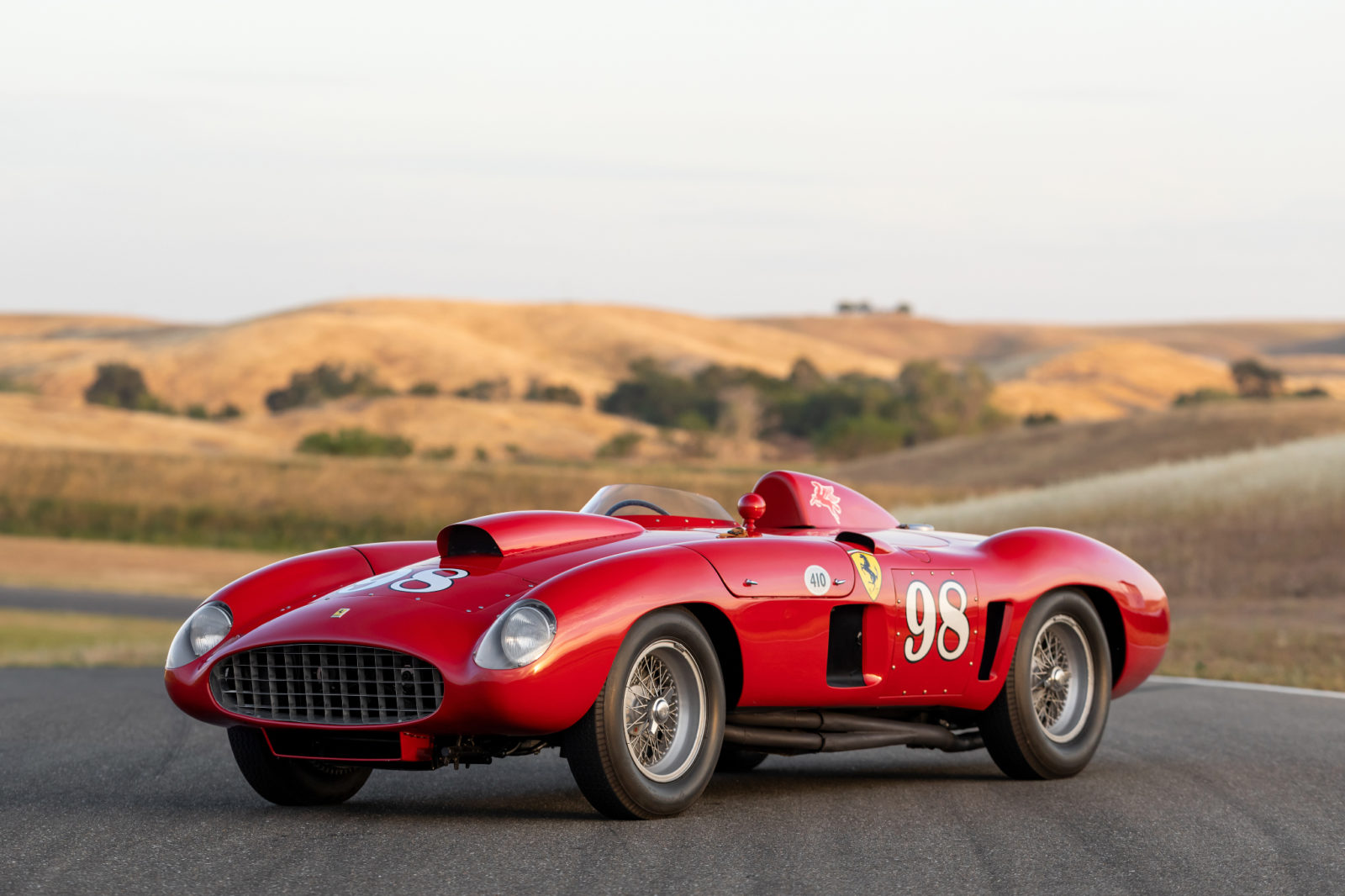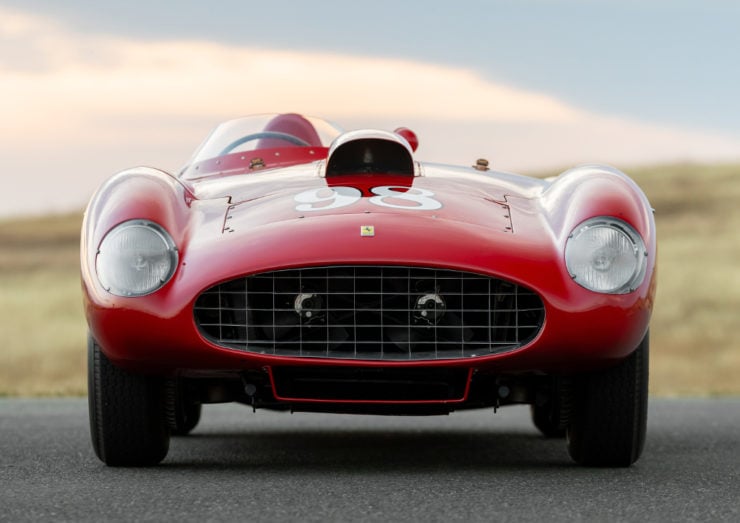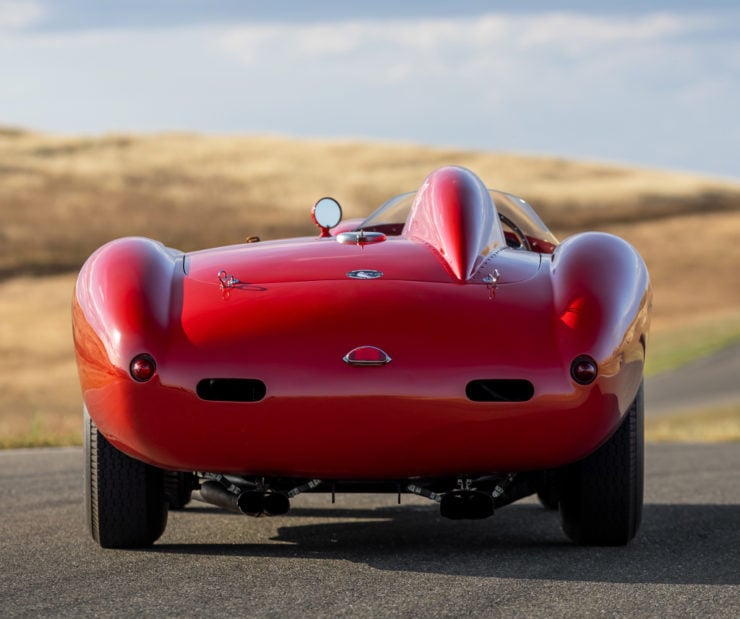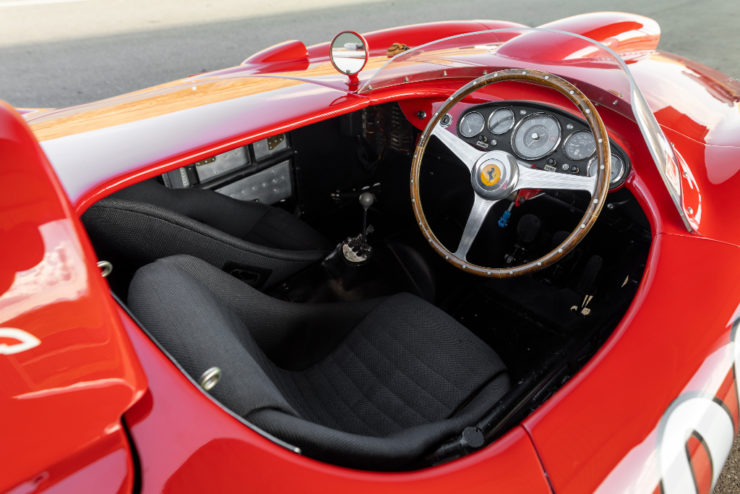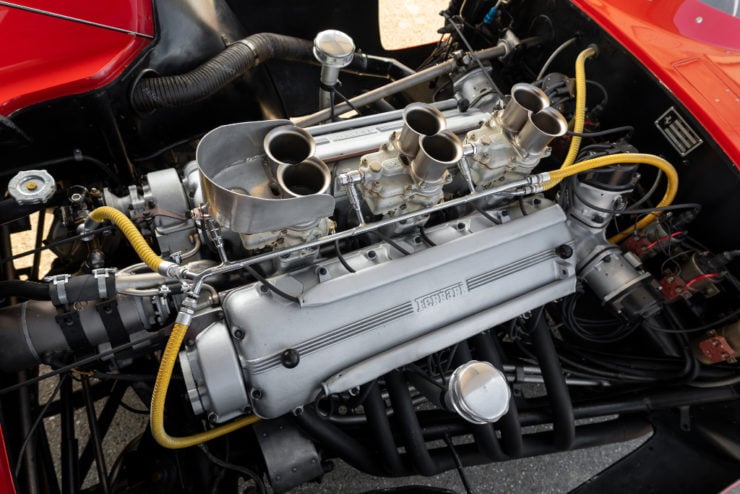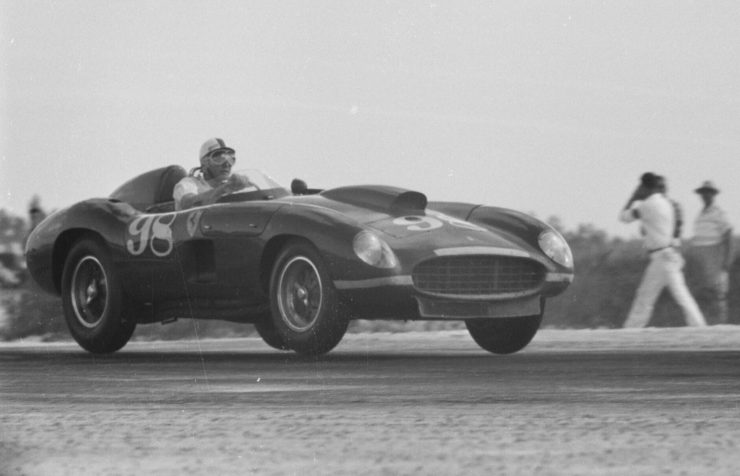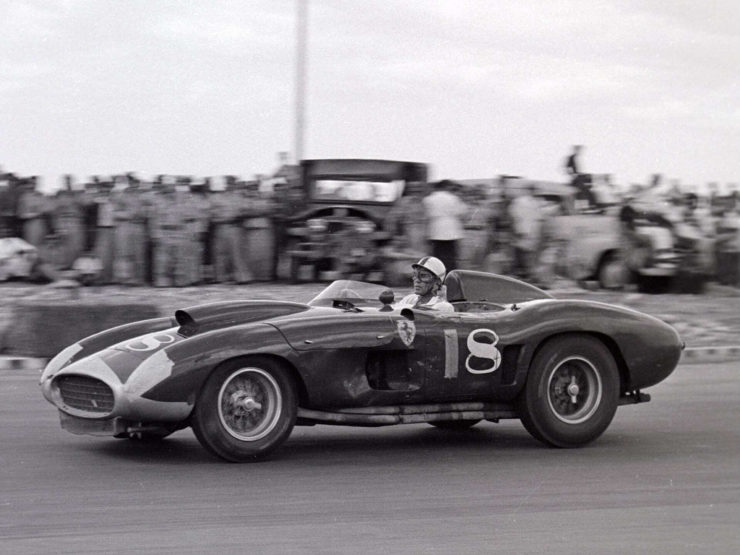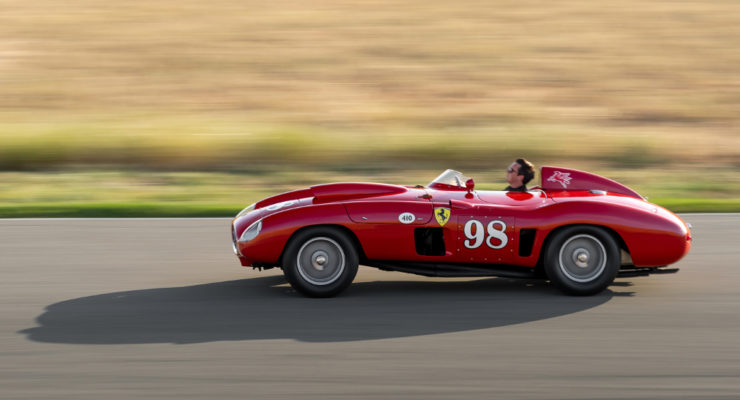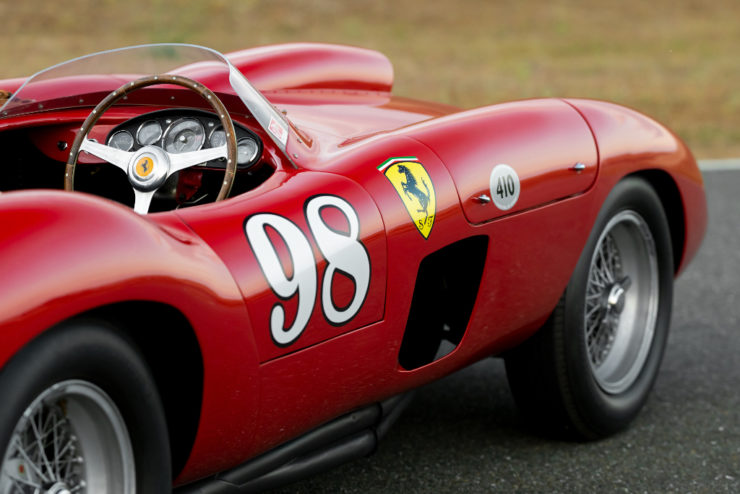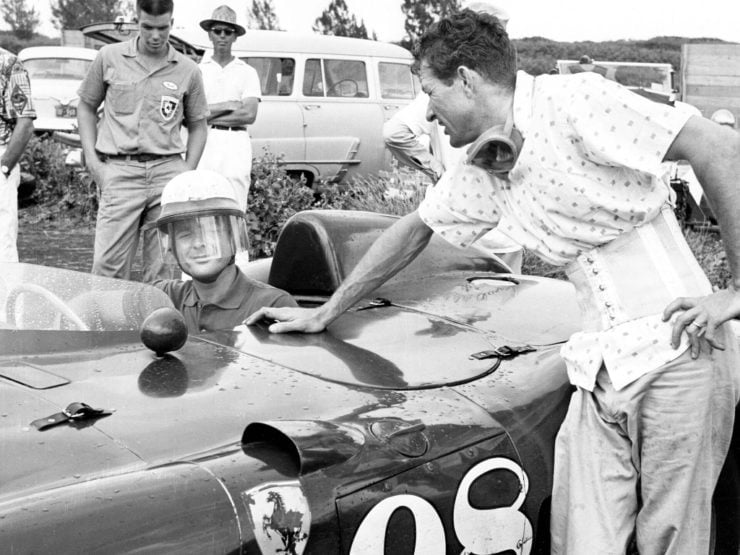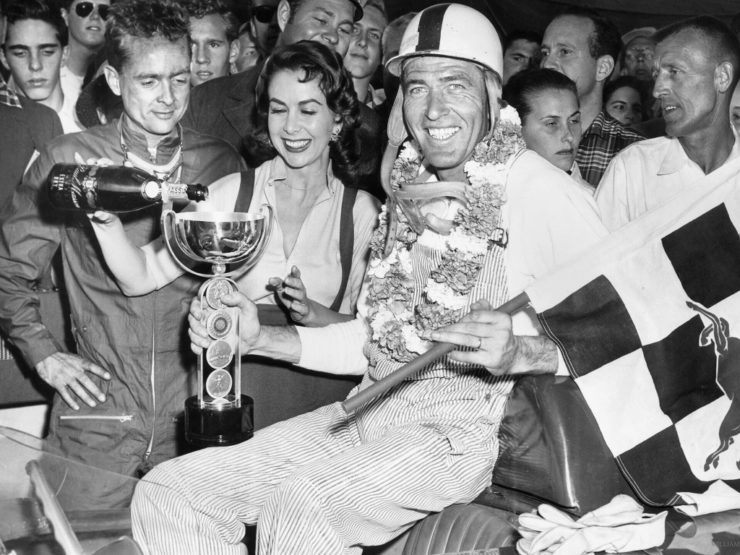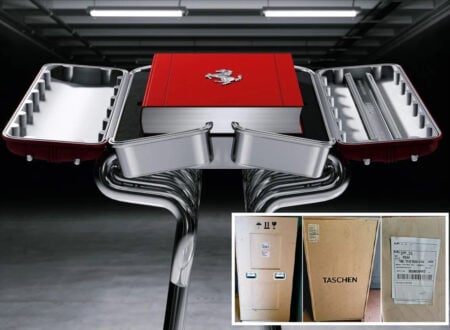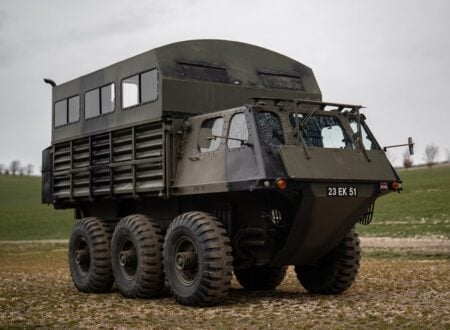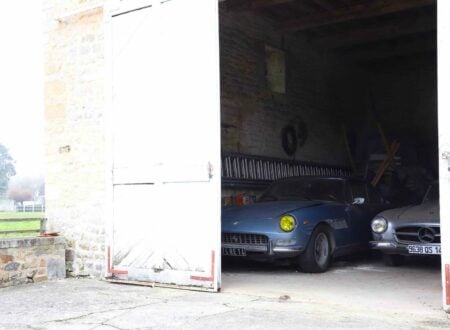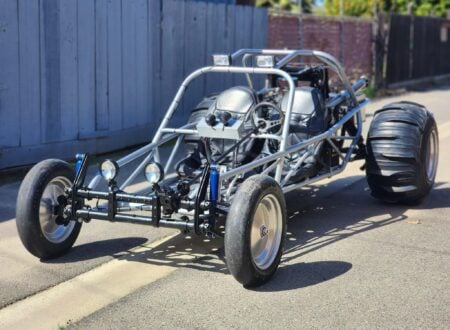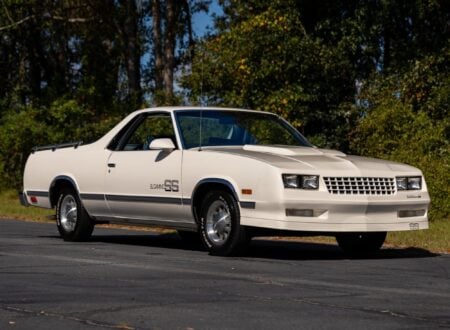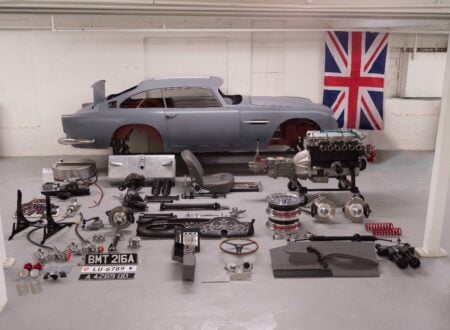Nicknamed the “Modena Monster”, this was one of only two Ferrari 410 Sports racing cars that were campaigned by the Scuderia Ferrari factory team and fitted with the twin spark plug Lampredi “Long Block” 4,961 cc V12 engines.
The car went on from the factory to carve out for itself a place in history being driven by some of the greatest names in 20th century motorsport including both Juan Miguel Fangio and Carroll Shelby.
Fast Facts – The Ferrari 410 Sport Spider
- The Ferrari 410 Sport Spider is a car custom-built by Ferrari for a race that never happened, but that didn’t stop it from carving out its place in the history of motorsport during the 1950s.
- It was driven by some of the greatest drivers ever to sit behind the wheel, including Juan Miguel Fangio, Phil Hill, Richie Ginther, and Carroll Shelby, during that era when he raced with a nitro glycerin pill under his tongue to keep his heart condition in check.
- The car raced in Cuba during the Communist Revolution of Fidel Castro – a time when Juan Miguel Fangio was kidnapped, and Stirling Moss came uncomfortably close to suffering the same fate.
- Enzo Ferrari told Carroll Shelby that “This was the best Ferrari he ever built” and years later Shelby would inscribe that message on the car’s fuel tank.
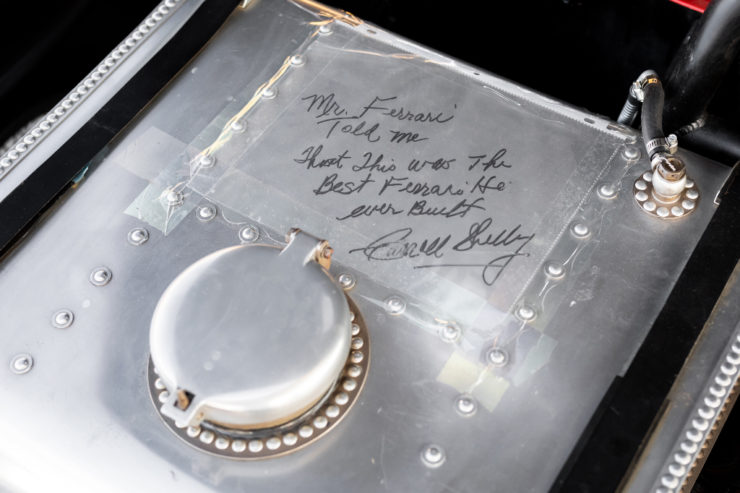

The Ferrari 410 Sport Spyder
Enzo Ferrari was a man passionate about motorsport and high performance cars.
He understood that one of the secrets to success for his young company was to obtain victories in high profile competition events, and an FIA World Sportscar Championship win would be a great feather in Ferrari’s cap – something that would make the motorsport world, and the sportscar buying public, to take notice.
The final event for the 1955 season was to be the Carrera Panamericana, which was a road race that traversed Mexico to the border with Texas. It was known as the most dangerous motor race in the world with accident deaths being the norm each year among drivers and spectators.
Not only did the Carrera Panamericana have a nasty reputation for being dangerous to people, it was also predictably destructive on cars, a reputation that would bring extra kudos to a sports car maker whose car successfully completed the course and won the event.
In the years up to 1955 Ferrari campaigned in the event without success and so they went back to the drawing board, literally, and designed a car purpose built for that event. It was designated the type 519/C and the chassis numbers all ended with the initials “CM” which stood for “Carrera Messicana” for the event they were created for.
This new car was the 410 Sport and the second two of the four to be made were fitted with a revised version of the Lampredi V12 engine with a capacity of 4,961 cc. This engine was given dual spark plugs per cylinder (i.e. twenty four in total), a quadruple distributor arrangement, combined with magneto ignition in the first car 0596 CM and coil ignition in the second car 0598 CM.
To feed in a healthy dose of fuel/air mix into those twelve thirsty cylinders three twin-choke Weber 46 DCF carburetors were bolted on in the middle of the “V.”
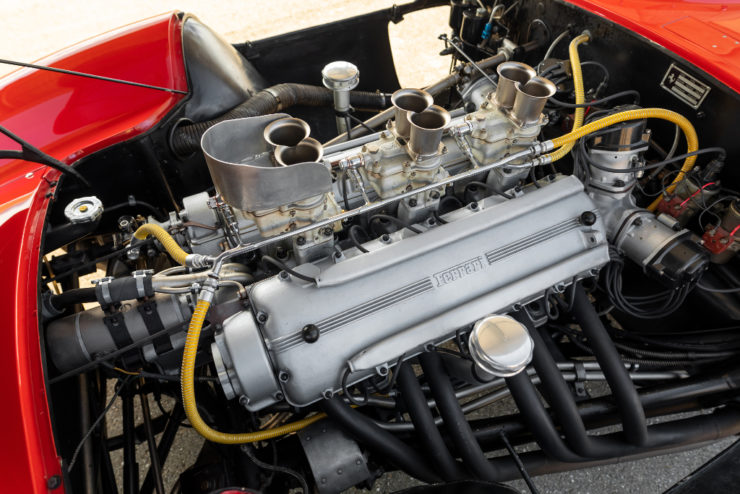

The suspension system was designed to provide the best handling and durability the engineers could achieve, at the front a fully independent system with upper and lower wishbones, and at the rear a transverse elliptic spring built into a De Dion design.
The roads in Mexico were rough and the suspension was going to need to soak up some exceeding nastiness while keeping the car on course and providing the best ride possible to keep drivers from fatigue.
The chassis was a tubular space-frame set for low riding for optimum stability and, they hoped, for survivability over the destructive conditions of the race.
The power of the dual ignition engines was slightly short of 400 hp, which was very high for cars of the period, and it would be this cutting edge level of power that would prove to be the car’s Achilles heel, paradoxical though that might sound.
Even as Ferrari’s engineers were designing and building these four the notorious 1954 Le Mans crash took place. This saw a very lightly constructed Mercedes-Benz 300 SLR crash at the end of Mulsanne Straight. With the car traveling at top speed it broke apart in a collision and sent pieces through the spectators at that location, killing 83 and the driver, and injuring about 180).
This caused the entire motor-sport fraternity to re-assess their participation in motorsport events, and the organizers cancelled the 1955 Carrera Panamericana. So the two cars Ferrari were working on suddenly did not have the race they were created for to compete in.
The Carving Out of a Place in Motor Sport History
The two double ignition 410 S were entered into the 1956 Buenos Aires 1,000 km race. 056 CM was to be driven by Peter Collins and Luigi Musso, while 058 CM was assigned to Juan Manual Fangio and Eugenio Castellotti.
Fangio preferred the pedals of his cars to be laid out in the old “C.A.B” layout. So from left to right the pedals were clutch, accelerator, and brake. This arrangement was not uncommon during the 1950s and 1960s. Some drivers, such as Fangio, preferred this arrangement for heel and toe gear-changing.
The two Ferrari’s faced stiff competition, especially in the person of British driver Stirling Moss who was so noted for his fast driving that he created the famous line uttered by British traffic policemen when they pulled you over for speeding “Who do you think you are – Stirling Moss?” Moss was driving a Maserati 300S – an extremely fast car – as long as it didn’t suffer a mechanical failure – something they tended to be prone to.
During the race the Fangio/Castellotti car suffered a tyre problem which required a pit stop – and then it was Fangio’s turn to catch up to Moss who had been happily storming ahead.
Fangio was driving in front of a crowd of fellow South Americans and he really wanted to win – so he drove using all his skills, talent, and ability and he closed the gap with some dramatic driving until he had Moss’s Maserati in his sights – and it was at that point that Murphy’s rule three reared its ugly head – “if anything can go wrong it will, and at the worst possible moment”
The transaxle failed bringing Fangio’s wild drive to a heart wrenching end. 400 hp had proved the car’s Achilles Heel – the engine was too much for the transmission. The transaxle of the other car, 0596 CM had failed on the 61st lap of the race – on the Fangio/Castellotti car it failed on the 89th lap.
No doubt there was much disappointment not only in the Ferrari pits, but also in the grandstand as the Brazilians mourned Fangio’s elimination from the race, although driving so hard that the car collapses under the strain is a pretty heroic way to withdraw.
Enter John Edgar and Carroll Shelby
Racing team owner John Edgar had taken note of the two Ferrari 410 S fitted with the dual spark plugs and quad distributors and had set his sights on getting one. He had also taken note of a young American driver who had given up his life as a chicken farmer to take up motor racing.
That ex-chicken farmer was of course none other than Carroll Shelby, and John Edgar wanted to recruit him to his racing team and put him in the driver’s seat of a 400 hp 410 S.
John Edgar was able to purchase 058 CM, the Fangio/Castellotti car, and he was able to lure Carroll Shelby away from Scuderia Parravano with the promise of turning him loose in the Ferrari.
Shelby loved speed, so much that despite his heart condition he did as much high quality motor racing as he could get: even though he had to keep a nitro glycerin pill under his tongue to help with his heart condition.
It would be this heart condition would ultimately force him to stop racing – but Shelby was determined to get the maximum enjoyment in the sport before that happened.
The Shelby/Ferrari 410 S combination proved to be formidable – he won his inaugural race at the 1956 Bremerton, Washington Seafair event and followed it up with a number of victories. His successes in the car caught the attention of Enzo Ferrari who followed the car and driver’s progress with great interest.
Shelby went on to a number of victories in the 410 S that year, the crowning glory being his being declared 1956 US Sports Car Driver of the Year.
1957 saw the Shelby/410 S combination in Cuba while the Cuban revolution was in full swing, but of course sports car racing should happen regardless of mere revolutions and so the Gran Premio de Cuba was organized with the race to take over the streets of Havana and bring the un-muffled roar of racing engines along the beachfront at Malecón.
Ninety laps and 310 miles later the Shelby/410 S combination finished a respectable second behind Fangio in one of the very quick Maserati 300S.
It was during 1957 that Phil Hill was able to take the 410 S 0598 out for some excursions and with it giving him wings to fly and thus he flew to a third place at Santa Barbara.
Carroll Shelby having been injured Richie Ginther was next to discover the joys of the “Modena Monster” as 0598 CM had come to be called, and in it he won the first feature race at the Riverside International Raceway. Ginther had a number of second place victories that year before 1958 arrived and with it a return to Cuba, still in the middle of a revolution. But last time the cigars were good and the enjoyment was fabulous – so what could possibly go wrong?
Juan Manuel Fangio was kidnapped by Cuban communists and Stirling Moss almost shared the same fate. Fangio was careful and diplomatic in his handling of his situation and formed a friendly relationship with his captors.
He was prevented from driving in the race – but was allowed to watch it on television. And was released without suffering harm. His communist kidnappers of course tried to convert him to their communist cause but he declined – motor racing is much more enjoyable than communism, and quite a bit safer to boot.
Carroll Shelby’s last race in the 410 S was at Palm Springs in April 1958. He took second place – a good finale for his man and machine team.
From Racing Car to Collector’s Classic
The Ferrari 410 S 0598 CM was ultimately retired from active competition, and has enjoyed a pampered retirement over the decades since it earned itself the nickname the “Modena Monster.”
Carroll Shelby loved it as the best Ferrari he’d ever driven – and he’d had the opportunity to drive it in motor racing in the 1950s which he regarded as a golden age of motorsport by many.
This car – with its wealth of history and connection with some of the greatest names in motorsport is coming up for sale by RM Sotheby’s at their Monterey sale to be held from 18-22 August 2022.
If you’d like to read more about this car’s remarkable history or register to bid you can visit the listing here. The price guide is set at $25,000,000 – $30,000,000 USD.
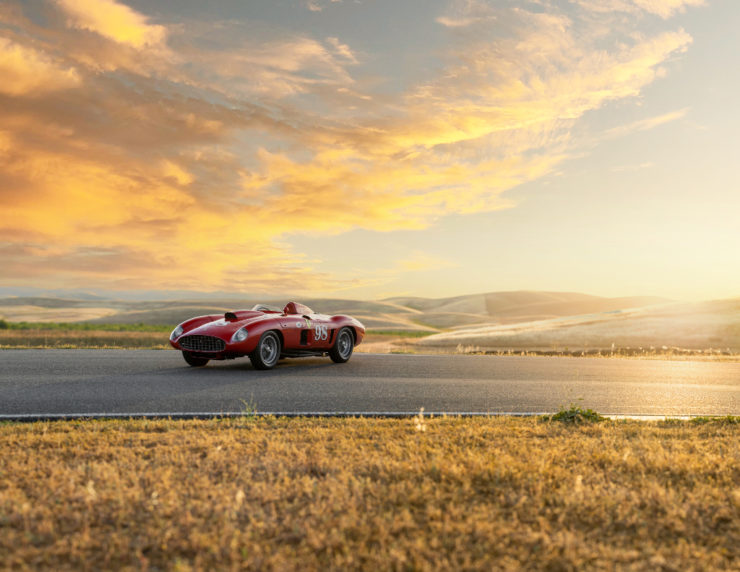

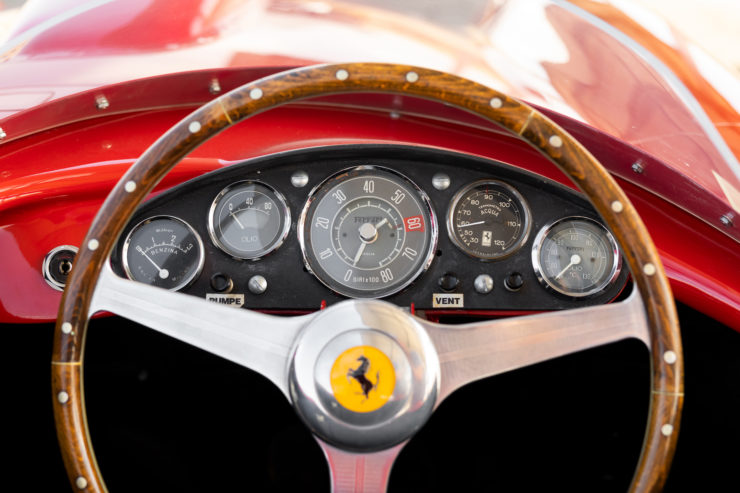
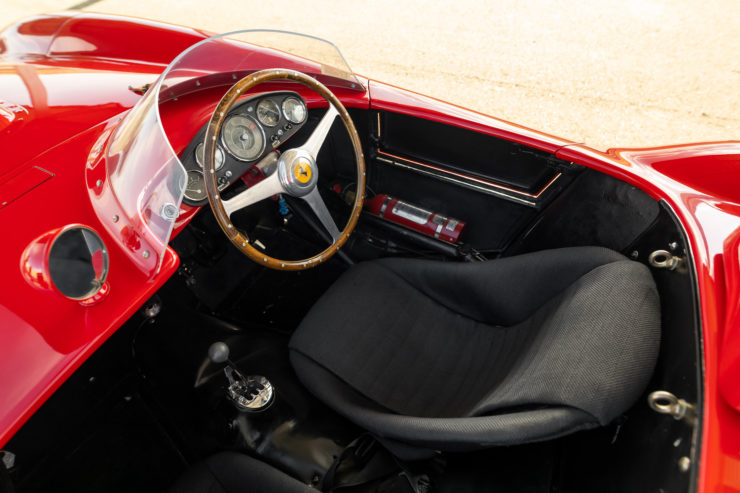
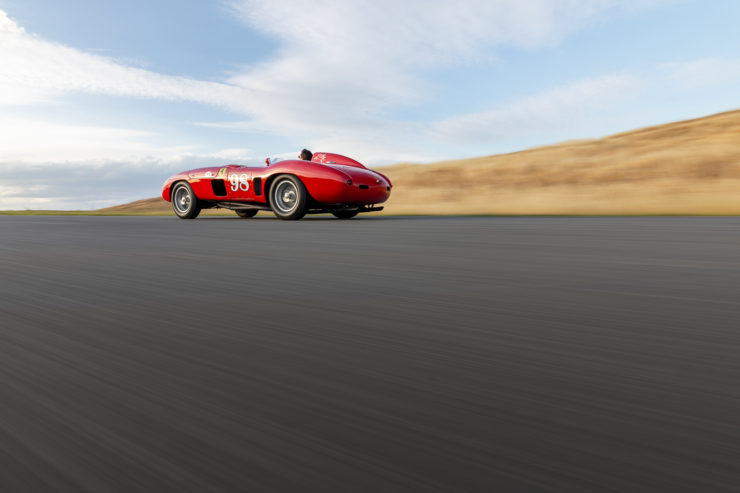
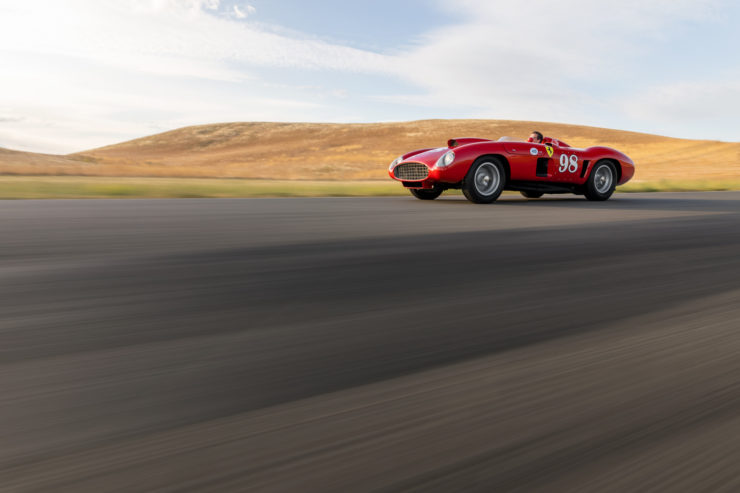
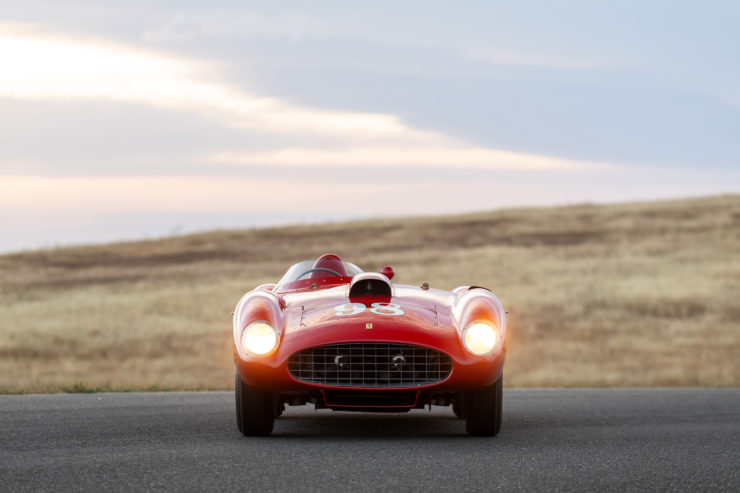
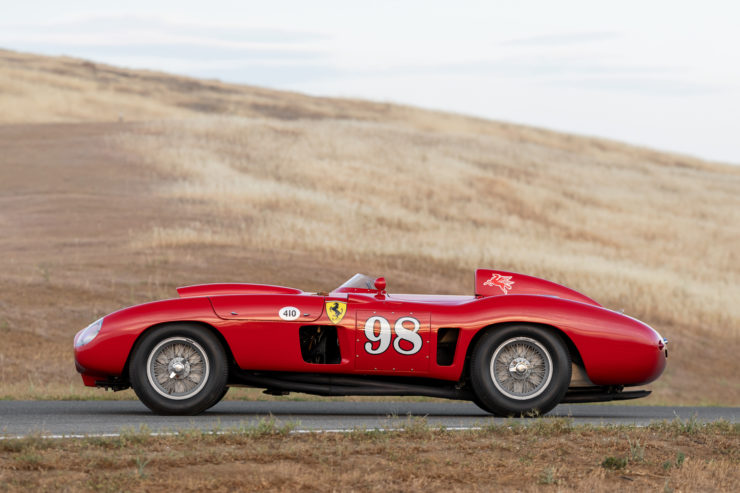
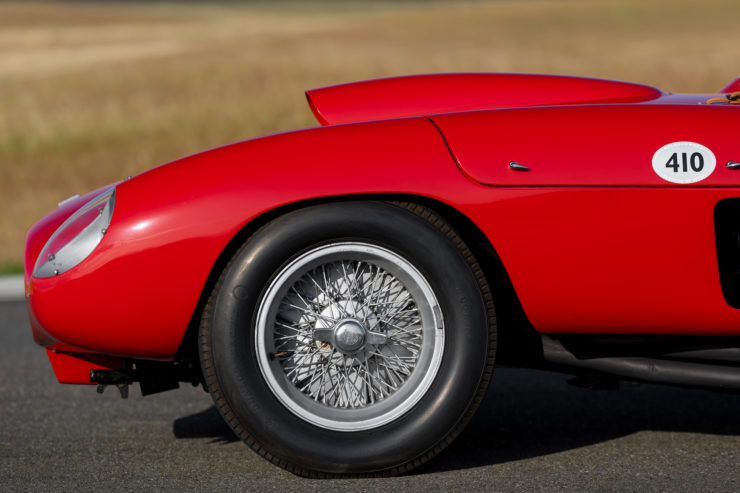
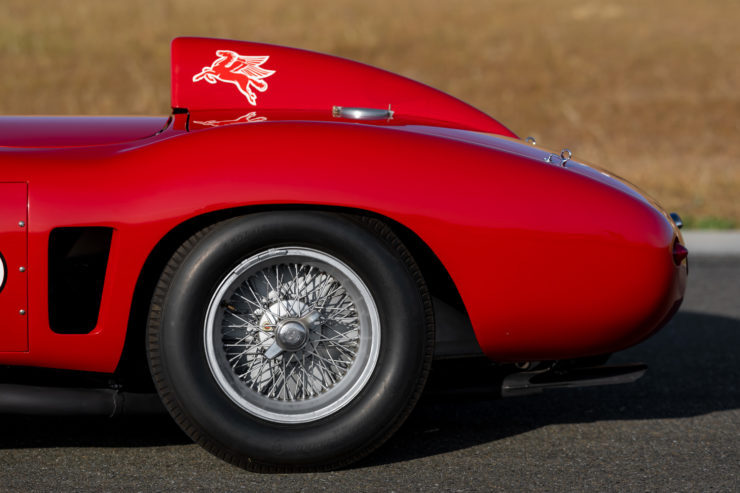
Pictures Courtesy of RM Sotheby’s

